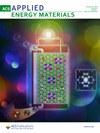The study of non-constant steady states and pattern formation for an interacting population model in a spatial environment
IF 5.4
3区 材料科学
Q2 CHEMISTRY, PHYSICAL
引用次数: 0
Abstract
This manuscript accounts for an investigation of the complex dynamics of a spatial model for interacting populations. We discuss the existence and boundedness of solutions for the proposed spatio-temporal system. The global stability of the co-existing steady state of the proposed system is analyzed with the help of a suitable Lyapunov function. We provide results on the existence and non-existence of positive non-constant solutions of the model. The priori estimate for the positive steady state is obtained for the nonexistence of the non-constant positive steady state by using the maximum principle. The existence of a non-constant positive steady state is studied with the help of Leray–Schauder degree theory. The stability and Hopf bifurcation are briefly revisited for the co-existing steady state in the corresponding temporal model, where a bubble-like structure is observed. The onset of Hopf bifurcation has been analyzed, and different conditions for the formation of the Turing pattern have been established through diffusion-driven instability analysis. Numerical simulations are performed in detail to figure out the effects of saturated harvesting on Turing patterns. The Turing as well as non-Turing patterns in their respective domains are also examined. Finally, the criteria of Turing–Hopf bifurcation is briefly demonstrated with relevant numerical examples and corresponding plots that give a better illustration of this work.
空间环境中互动种群模型的非恒定稳定状态和模式形成研究
本手稿阐述了对相互作用种群空间模型复杂动力学的研究。我们讨论了所提出的时空系统解的存在性和有界性。在合适的 Lyapunov 函数的帮助下,分析了所提系统共存稳态的全局稳定性。我们提供了模型正非常数解存在与不存在的结果。利用最大值原理,我们得到了正稳态的先验估计值,以确定非恒定正稳态的不存在性。借助 Leray-Schauder 度理论研究了非恒定正稳态的存在性。在相应的时间模型中,对共存稳态的稳定性和霍普夫分岔进行了简要重述,观察到了类似气泡的结构。分析了霍普夫分岔的发生,并通过扩散驱动不稳定性分析确定了图灵模式形成的不同条件。为了弄清饱和采集对图灵模式的影响,我们进行了详细的数值模拟。此外,还研究了各自领域中的图灵和非图灵模式。最后,通过相关的数值示例和相应的图表简要说明了图灵-霍普夫分岔的标准,从而更好地诠释了这项工作。
本文章由计算机程序翻译,如有差异,请以英文原文为准。
求助全文
约1分钟内获得全文
求助全文
来源期刊

ACS Applied Energy Materials
Materials Science-Materials Chemistry
CiteScore
10.30
自引率
6.20%
发文量
1368
期刊介绍:
ACS Applied Energy Materials is an interdisciplinary journal publishing original research covering all aspects of materials, engineering, chemistry, physics and biology relevant to energy conversion and storage. The journal is devoted to reports of new and original experimental and theoretical research of an applied nature that integrate knowledge in the areas of materials, engineering, physics, bioscience, and chemistry into important energy applications.
 求助内容:
求助内容: 应助结果提醒方式:
应助结果提醒方式:


